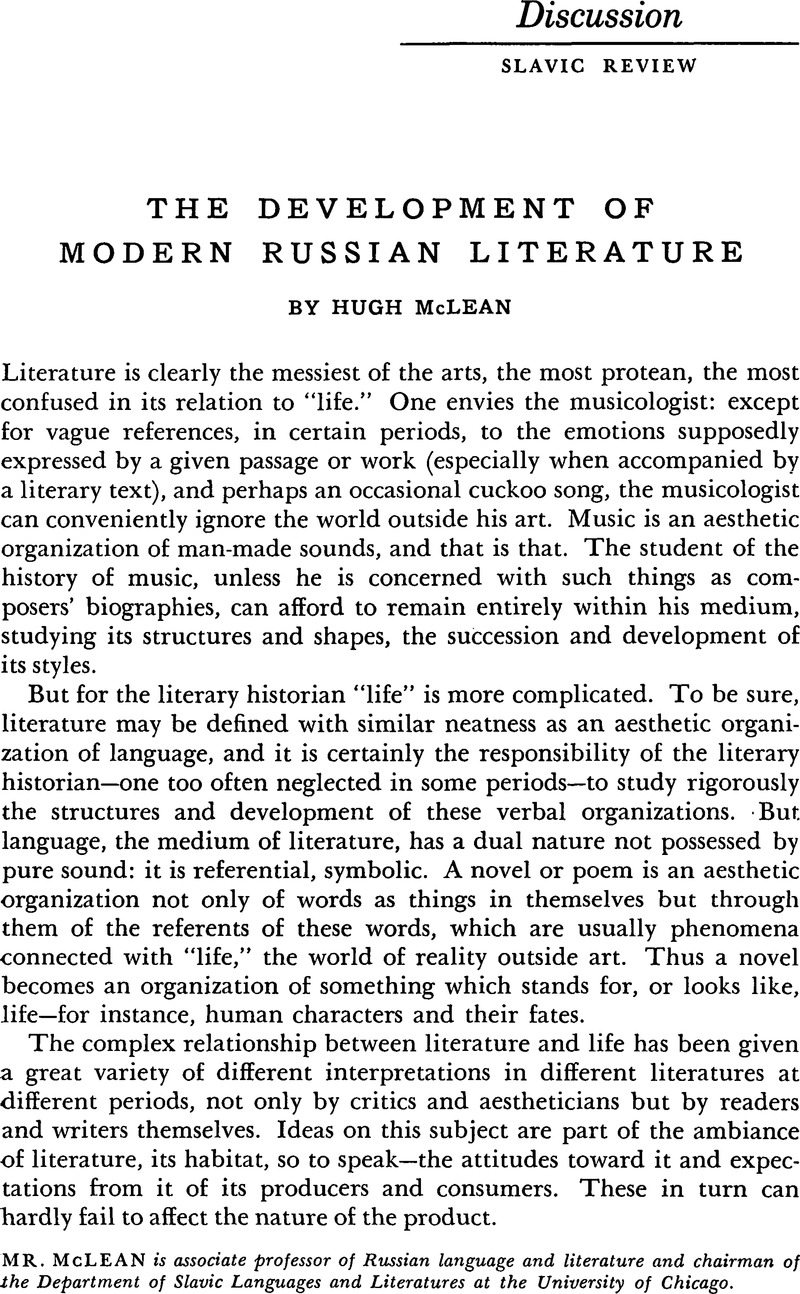Published online by Cambridge University Press: 27 January 2017

1 “Ty sprashivaesh', kakaia tsel’ u Tsyganov? Vot na! Tsel’ poezii—poeziia—kak govorit Del'vig (esli ne ukral etogo). Dumy Ryleeva i tseliat, a vse nevpopad.” ![]() (Moscow and Leningrad, 1949), X, 141.
(Moscow and Leningrad, 1949), X, 141.
2 E.g., ![]() (Moscow and Petrograd, 1924);
(Moscow and Petrograd, 1924); ![]() (Moscow, 1934).
(Moscow, 1934).
3
![]() (Paris, 1934).
(Paris, 1934).
4
![]() (Moscow, 1953), p. 46.
(Moscow, 1953), p. 46.
5
![]() , XV (Moscow, 1949), 446.
, XV (Moscow, 1949), 446.
6 Ably analyzed by Ralph, Matlaw, “The Manifesto of Russian Symbolism” Slavic and East European Journal, XV (1957), 177–91.Google Scholar
7 ”… Novoe ideal'noe iskusstvo, griadushchee v Rossii na smenu utilitarnomu poshlomu realizmu.” #. ![]() , XV (St. Petersburg and Moscow, 1914), 252.
, XV (St. Petersburg and Moscow, 1914), 252.
8
![]() (Moscow and Leningrad, 1946), p. Leningrad
(Moscow and Leningrad, 1946), p. Leningrad
9
![]() , No. 3 (1922), pp. 25-31. Cited from
William, Edgerton, “The Serapion Brothers: An Early Soviet Controversy” American Slavic and East European Review, VIII (1949), 51–52.Google Scholar
, No. 3 (1922), pp. 25-31. Cited from
William, Edgerton, “The Serapion Brothers: An Early Soviet Controversy” American Slavic and East European Review, VIII (1949), 51–52.Google Scholar
10
![]() (Berlin, 1931).
(Berlin, 1931).
11 Leon, Trotsky, Literature and Revolution, trans. Strunsky, Rose (New York, 1925), p. 1925 Google Scholar.
12 Brown, Edward J., The Proletarian Episode in Russian Literature (New York, 1953).Google Scholar